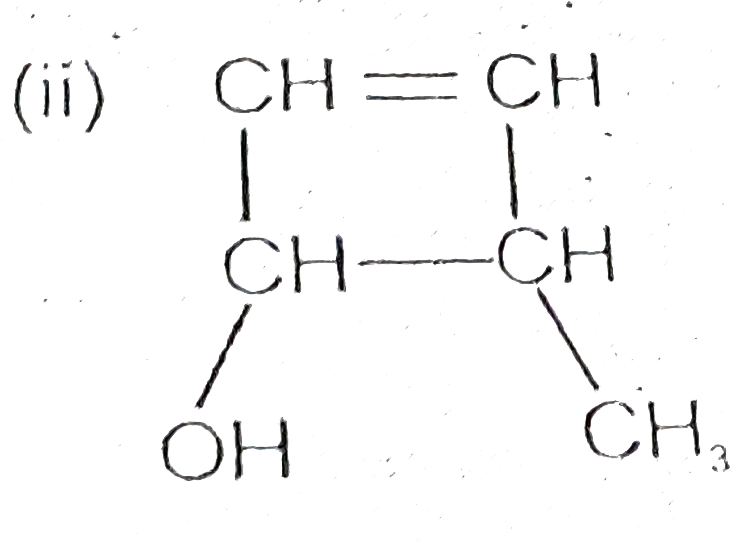draw bond line structure ofch3(ch2)6ch=ch(ch2)2−c∞h
To draw the bond line structure of the compound CH3(CH2)6CH=CH(CH2)2COOH, we will follow these steps:
Step 1: Identify the Structure
The compound consists of:
- A methyl group (CH3)
- Six methylene groups (CH2)
- A double bond (C=C)
- Two more methylene groups (CH2)
- A carboxylic acid group (COOH)
Step 2: Start with the Methyl Group
Begin by drawing the methyl group (CH3) on the left side.
Step 3: Add the Six Methylene Groups
Next, add six methylene groups (CH2) in a linear fashion. This will look like a straight chain of carbon atoms connected by single bonds.
Step 4: Introduce the Double Bond
After the six CH2 groups, add a carbon atom that will be part of the double bond. This carbon will connect to another carbon that also has a hydrogen atom attached (this is the CH part of the double bond).
Step 5: Add the Two Methylene Groups
Following the double bond, add two more methylene groups (CH2) in a linear fashion.
Step 6: Add the Carboxylic Acid Group
Finally, at the end of the chain, add the carboxylic acid group (COOH). This consists of a carbon atom double-bonded to an oxygen atom and single-bonded to a hydroxyl group (OH).
Final Structure
The bond line structure can be represented as follows:
CH3∣CH2−CH2−CH2−CH2−CH2−CH=CH−CH2−CH2−COOH
In a more simplified bond line format, it would look like this (without explicitly showing hydrogen atoms):
CH3∣−−−(CH2)6−−−CH=CH−−−(CH2)2−−−COOH
The compound consists of:
- A methyl group (CH3)
- Six methylene groups (CH2)
- A double bond (C=C)
- Two more methylene groups (CH2)
- A carboxylic acid group (COOH)
Begin by drawing the methyl group (CH3) on the left side.
Next, add six methylene groups (CH2) in a linear fashion. This will look like a straight chain of carbon atoms connected by single bonds.
After the six CH2 groups, add a carbon atom that will be part of the double bond. This carbon will connect to another carbon that also has a hydrogen atom attached (this is the CH part of the double bond).
Following the double bond, add two more methylene groups (CH2) in a linear fashion.
Finally, at the end of the chain, add the carboxylic acid group (COOH). This consists of a carbon atom double-bonded to an oxygen atom and single-bonded to a hydroxyl group (OH).
The bond line structure can be represented as follows:
Topper's Solved these Questions
- BOOK - CBSE COMPLEMENTARY MATERIALCHAPTER - ORGANIC CHEMISTRY: SOME BASIC PRINCIPLES AND TECHNIQUESEXERCISE - 2-marks quetion26videos
ORGANIC CHEMISTRY: SOME BASIC PRINCIPLES AND TECHNIQUES
- BOOK - CBSE COMPLEMENTARY MATERIALCHAPTER - ORGANIC CHEMISTRY: SOME BASIC PRINCIPLES AND TECHNIQUESEXERCISE - 3 marks question6videos
ORGANIC CHEMISTRY: SOME BASIC PRINCIPLES AND TECHNIQUES
- BOOK - CBSE COMPLEMENTARY MATERIALCHAPTER - ORGANIC CHEMISTRY: SOME BASIC PRINCIPLES AND TECHNIQUESEXERCISE - ONE WORD ANSWER TYPE QUESTIONS10videos
ORGANIC CHEMISTRY: SOME BASIC PRINCIPLES AND TECHNIQUES
- BOOK - CBSE COMPLEMENTARY MATERIALCHAPTER - HYDROGENEXERCISE - Unit Test11videos
HYDROGEN
- BOOK - CBSE COMPLEMENTARY MATERIALCHAPTER - P-BLOCK ELEMENTSEXERCISE - UNIT TEST8videos
P-BLOCK ELEMENTS
Similar Questions
Knowledge Check
- Question 1 - Select One
What kind of molecule is represented by the structure below?
CH3CH2CH2CH2CH=CHCH2CH2CH2CH2CH2CH2CH2COOHAa sugarBan unsaturated fatty acidCa saturated fatty acidDa disaccharide - Question 2 - Select One
The number of sigma (σ) and pi(π) bonds in the following structure are
(CH3)2CH−CH=CH−CH2−CH=CH−C∣C2H5H−CH3Aσ bonds -33 and π bonds-2Bσ bonds-22 and π bonds-2Cσ bonds-42 and π bonds-2Dσ bonds-40 and π bonds-3
Show the polarisation of carbon-magnesium bond in the following structure:
CH3CH2−CH2MgX.View SolutionExpand each the following condensed formulae into their complete structural and bond line formulae:
(a)CH3CH2COCH2CH3 ,(b)CH3CH=CH(CH2)3CH3View SolutionWrite its bond line formula
(i) CH3CH(OH)CH2CH2OH View Solution
View SolutionWrite the IUPAC name of the structural formulae.
CH3−CH2−COOHView SolutionDraw the resonance structures of the following compounds.
(a) CH2=CH−..Cl..:
(b) CH2=CH−CH=CH2
(c) CH2=CH−C∣H=OView SolutionDraw the resonance structures of the following compounds.
(a) CH2=CH−..Cl..:
(b) CH2=CH−CH=CH2
(c) CH2=CH−C∣H=OView Solution

